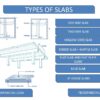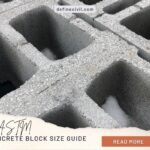A civil site engineer must have good site knowledge in =to be able to work well on project. A civil engineer is an important member of a team that works to design and build civil engineering structures. In the UK, civil engineering teams must use a civil site engineer to ensure that their plan will work as it should.
If a civil site engineer doesn’t have the correct skills, then the project could be at risk. These engineers can help oversee the construction process, but cannot actually do the work themselves. The civil site engineer responsibility encompasses many different jobs that they must ensure are completed correctly.

Experience
When it comes to a civil site engineer responsibility, the most important skill is experience. This means that the individual must be involved in a lot of different projects. This will ensure that they have the ability to handle large projects without any problems. They must also be skilled enough to find any problems and correct them quickly. A civil site engineer must be able to find and fix problems in order for them to ensure the site is safe.
Level of knowledge
Another skill a civil site engineer must have been an impressive level of knowledge about a wide variety of materials. This includes everything from concrete and steel to timber and stone. This is so that they are well equipped to choose the best material for each project. A good site engineer should know how to assess these materials and the best ways to use them in the design of a building or infrastructure project.
Site Engineer Knowledge
Construction knowledge is also very important for a site engineer. It is vital for them to know when certain things are finished and when they are going to need further repairs or renovations. This knowledge is also going to be important for them when they are responsible for making sure that everything runs smoothly once a project has been started. Any delays that are caused in a construction project are going to be detrimental to the overall completion date.
Planning and execution of work
The knowledge that a civil site engineer has will also include their ability to plan a project. It is imperative that they have the ability to clearly and accurately plan out the most effective course of action for a given project. This includes determining what resources are available, what tasks will have to be done, where those tasks need to be performed, and who is going to perform them. The ability to realistically predict any delays in a project will make it easier to handle things if they arise.
Ability to negotiate
The knowledge that a site engineer has is also important when it comes time to negotiate contracts with contractors and suppliers. These negotiations could involve purchasing materials, services, or even land. The ability to properly negotiate these contracts will help ensure that a business owner is able to get the best price possible for the items that are being purchased. These negotiations may also lead to changes in the terms of a contract or a change in the site’s use. As a site engineer, it will be their job to keep the information that is being shared in the business transaction accurate. This can be a very important job, as not only is a mistake in this information potentially costly, but there is also the risk of the business owner having to pay out too much money due to incorrect figures.
Team work
The knowledge that a civil site engineer has is also extremely important when it comes to finding qualified workers. This can be a difficult task, as there are a variety of different qualifications that one can get when getting into the construction business. The key thing to remember is that anyone can train to be a civil site engineer, but without the necessary skills that are needed, it is likely that the person will not be able to find a job in the field. There are a variety of different programs that can be taken when studying for a civil engineering degree, and many people choose to take those courses as a way of earning an actual living while still studying. When it comes to interviewing potential employees, it is important to ask about the various training programs that a prospective employee has taken.
Assessment of job
As well as learning about the knowledge that a civil site engineer should know, it is also important to learn about the job itself. This involves planning out how the site will function, as well as working out how to keep the site safe and secure. A civil site engineer must be able to work with all sorts of people, from local councils to developers, and as such it is important to be professional and know what to say no matter who is involved. Being prepared and knowledgeable is always going to be the best course of action, as this means that any mistakes that are made will not cost money or time.
Densities of Different Construction Materials
| Sr. No. | Construction Material | Density |
| 1. | Bricks | 1600-1920 kg/m3 |
| 2. | Concrete Block | 1920 kg/m3 |
| 3. | Reinforced Concrete | 2310-2700 kg/m3 |
| 4. | Normal loose dry sand density | 1442 kg/m3 |
| 5. | Mass density of aggregate | 2400-2900 kg/m3 |
| 6. | PCC Plain Concrete | 2400 kg/m3 |
| 7. | Steel | 7850 kg/m3 |
| 8. | Stainless Steel | 7480-8000 kg/m3 |
| 9. | Aluminum | 2710 kg/m3 |
| 10. | Timber | 497-849 kg/m3 |
| 11. | Natural fiber reinforced concrete | 800-1250 kg/m3 |
| 12. | Air entrained concrete density | 2230 kg/m3 |
| 13. | Density of light weight concrete | 500-1850 kg/m3 |
| 14. | Density of cement mortar | 2162 kg/m3 |
| 15. | Tempered Glass | 2500 kg/m3 |
Concrete pouring
- Normal concrete temperature allowed during placement is 10 to 32 degree centigrade or 50 to 90 degree F.
- The maximum height during pouring or free fall of concrete is restricted to 1.5 to 2 meters to avoid segregation of concrete.
- Curing period for concrete is minimum 7 days and maximum of 14 days at temperature of 50
- Typical vibrator used for concrete has a head diameter of 30, 50, and 80 mm. The frequency of vibration is 140-200 hz.
- Normal types of vibrators for concrete are: needle vibrator – surface vibrator – screed vibrator – external vibrator or formwork vibrator and table vibrator.
- Some common methods of concrete curing are wet covering, water spraying, sheet covering, soaked hessian cloth, electrical curing, and membrane curing.
- Slump of concrete is measured by slump cone test.
- Workability of concrete is measured by slump cone test or compaction factor test.
- Three types of slump are collapse, shear, and true slump.
- Typical range of concrete slump in wet condition is 150 to 175 mm.
- Normal standard concrete has compressive strength in the range of 2500 to 4000 psi or 17 to 28 Mpa.
- Compressive strength is tested by crushing concrete cylinders in the UTM machine.
- Size of concrete sample for compressive strength cylinder is 150 mm diameter and 300 mm height.
- Concrete cube used for testing is of size 150 x 150 x 150mm.
- rebound hammer test is used for non-destructive testing of concrete.
- normal aggregates sizes used in concrete is in range of 9.5 mm to 37.5 mm.
- specific gravity of cement is around 3.15
- 4 basic compounds of cement are called brogues compounds they are tricalcium silicate, dicalcium silicate, tricalcium aluminate, tetra-calcium alumino-ferrite.
- The grey color of cement is due to tetra calcium alumino ferrite.
- Here’re initial and final setting time of different concrete
Also Read: Difference between Segregation and Bleeding in Concrete
| Concrete Type | Initial setting time | Final setting time |
| Concrete with ordinary Portland cement | 30 | 600 |
| Concrete with Sulphate resisting cement | 30 | 600 |
| Concrete with Portland pozolana cement | 30 | 600 |
| Concrete with rapid hardening cement | 30 | 600 |
Reinforcement some Important Points
- reinforcement is generally available in two grades : grade 40 and grade 60
- grade represent the yielding strength of steel rebar in thousands of psi.
- the ribs on the steel rebar is to prevent slippage failure.
- development length is calculated generally with 41 times diameter.
- formula for lap length in direct tension should be greater between 2 Ld or 30d. where Ld is the development length.
- The lap length shall not be less than 15 d or 20 cm for straight bars.
- Lapping is not allowed for the bars having diameters more than 36 mm.
- Chair Spacing Maximum spacing is 1.00 m (or) 1 No per 1m2
- For Dowels rod minimum of 12 mm diameter should be used.
- Chairs minimum of 12 mm diameter bars to be used.
- Longitudinal reinforcement not less than 0.8% and more than 6% of gross C/S.
- Minimum bars of square column is 4 No’s and 6 No’s for circular column.
- Main bars in the slabs shall not be less than 8 mm (HYSD) or 10 mm (Plain Bars) and the distributors not less than 8 mm and not more than 1/8 of slab thickness.
- Minimum thickness of slab is 125 mm.
- Dimension tolerance for cubes + 2 mm.
- Free fall of concrete is allowed maximum to 1.50 m.
- Lap slice not to be used for bar larger than 36 mm.
- Water absorption of bricks should not be more than 15 %.
- PH value of water should not be less than 6.
- Compressive strength of Bricks is 3.5 N/mm2
- In steel reinforcement binding wire required is 8 kg per MT.
- In soil filling as per IS code, 3 samples should be taken for core cutting test for every 100 m2.
De-shuttering time for different types of concrete
1)The period for columns, walls, vertical formworks – 16-24 hrs
2) period for Soffit formwork to slabs – 3 days (props to be refixed after removal)
3) The period for Soffit to beams props – 7 days (props to refixed after removal)
4) Beams spanning up to 4.5m – 7 days
5) Beams spanning over 4.5m – 14 days
6) Arches spanning up to 6m – 14 days
7) Arches spanning over 6m – 21 days
A gift to download in PDF
If you want to download civil engineer site knowledge in pdf format, here’s a gift. Please click the button below and you can see all this information in your mobile phone or laptop for future reference:
[su_button url=”https://definecivil.com/wp-content/uploads/2021/08/civil-engineering-site-knowledge-pdf.pdf” target=”blank” style=”3d” background=”#1cae1b” size=”5″ center=”yes” icon=”icon: comment” text_shadow=”0px 0px 0px #000000″]Download the pdf[/su_button]

















